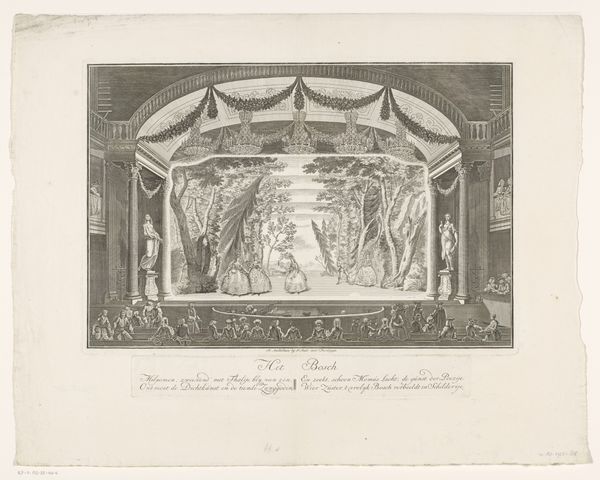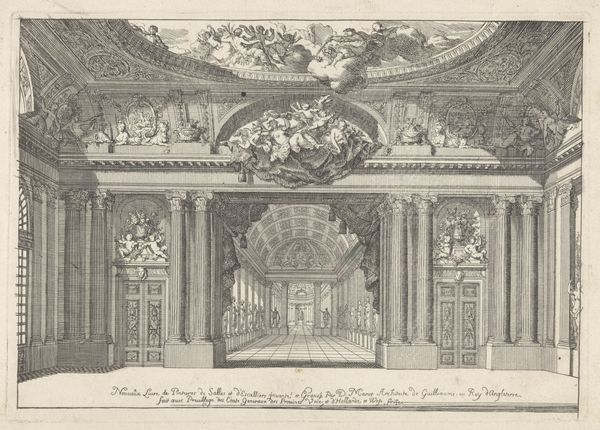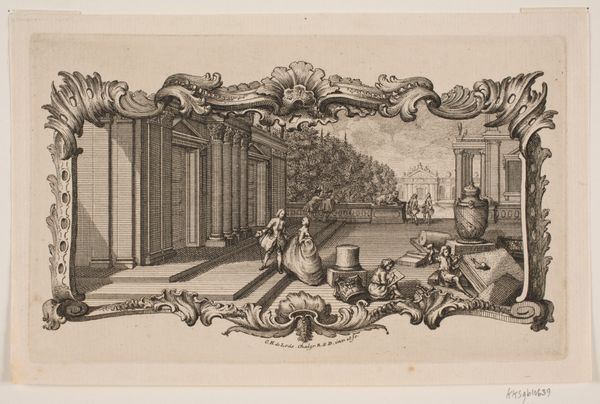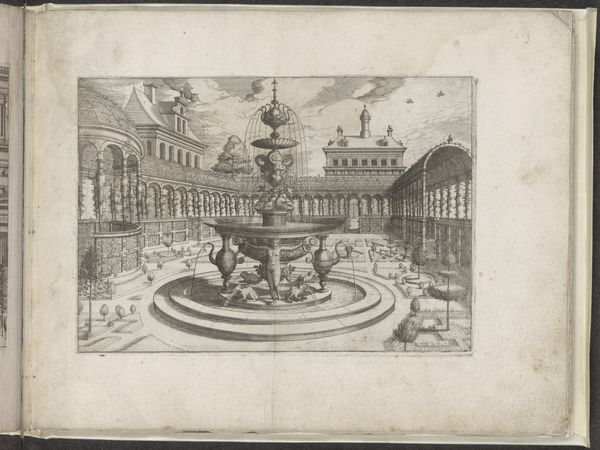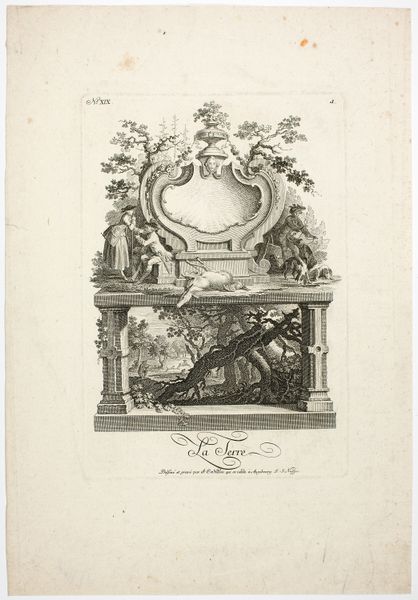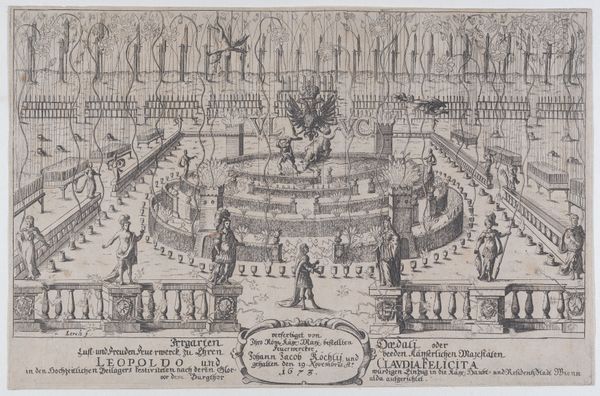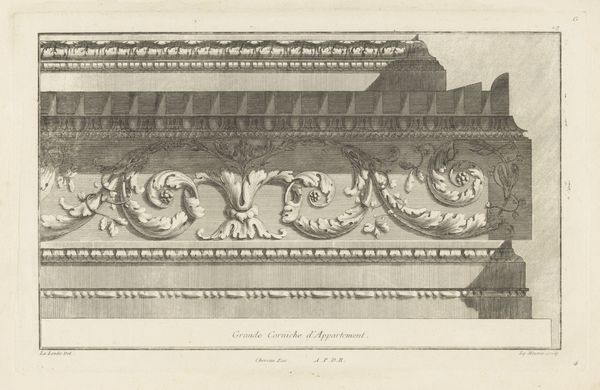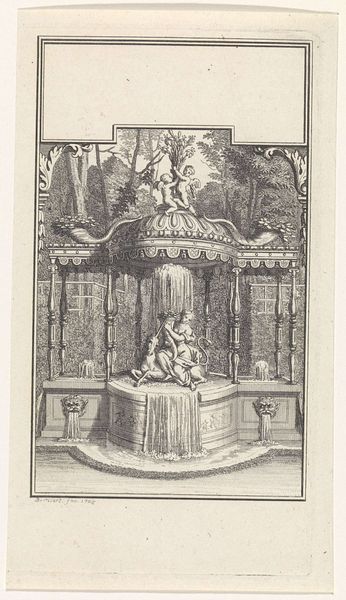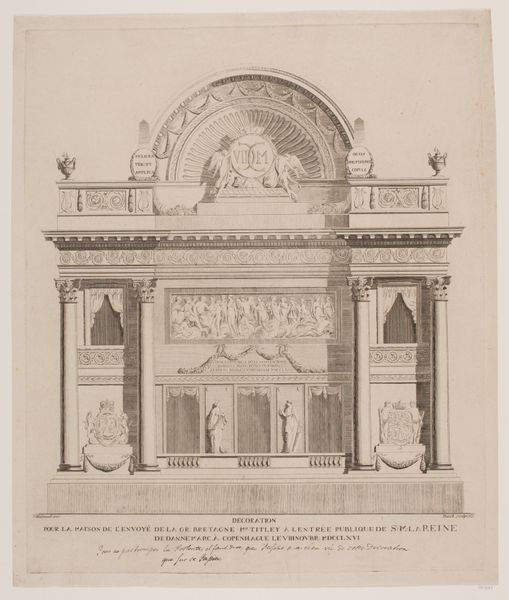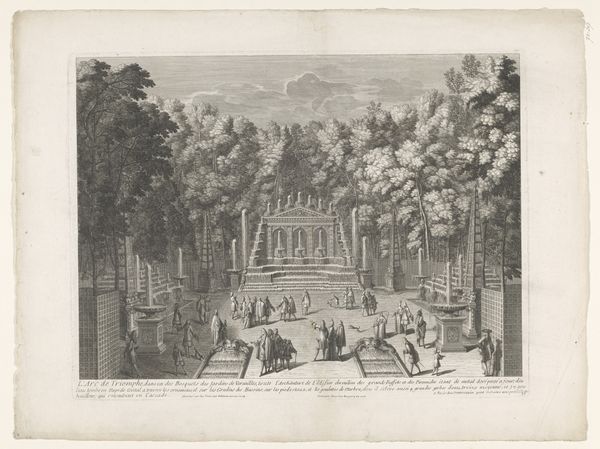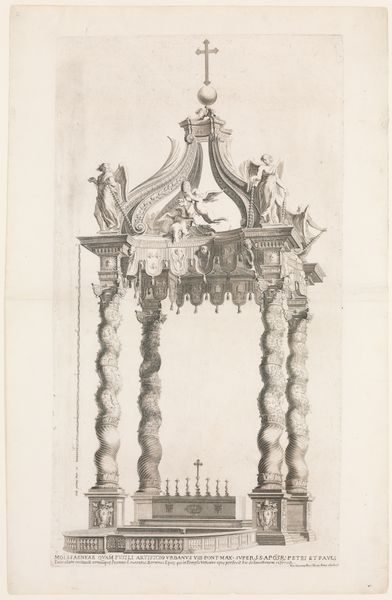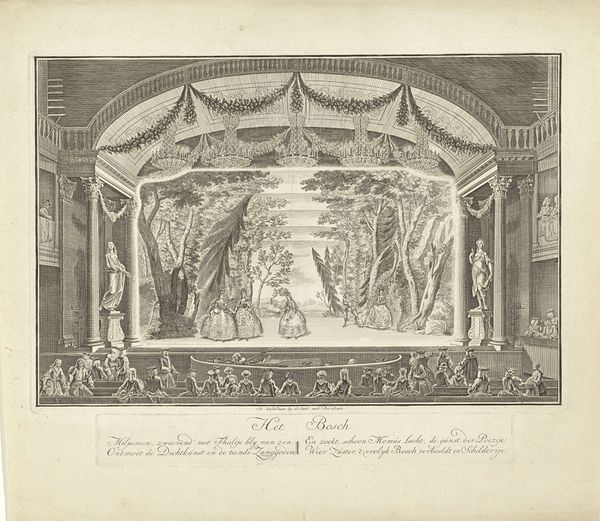
Speculum Romanae Magnificentiae: Fountain and Gardens of the Villa d'Este at Tivoli 1575
0:00
0:00
drawing, print, engraving
#
drawing
#
garden
# print
#
landscape
#
italian-renaissance
#
engraving
Dimensions: sheet: 12 3/16 x 16 3/4 in. (31 x 42.5 cm) mount: 16 7/8 x 22 1/8 in. (42.8 x 56.2 cm)
Copyright: Public Domain
Curator: Let's turn our attention to "Speculum Romanae Magnificentiae: Fountain and Gardens of the Villa d'Este at Tivoli," an engraving by Étienne Dupérac, dating to 1575. Editor: My immediate impression is one of theatricality; it’s almost like a stage set, meticulously crafted with a slightly unsettling symmetry. Curator: Exactly. Dupérac was documenting the glories of Rome, and this print is part of a series meant to evoke awe and a sense of classical revival. Water, here, becomes a symbol of power and control over nature. Notice how the fountains are not simply decorative; they are architectural statements. Editor: I'm intrigued by the placement of the statues. They are set back, almost recessed into grotto-like spaces. It positions the figures less as divine representations, but instead it creates a separation, emphasizing an experience where access is restricted. This visual control feels representative of Renaissance societal power structures. Curator: You’re right, there’s a carefully controlled perspective here. It recalls ancient Roman gardens, which were also places of philosophical retreat and social display. In that setting, each deity symbolized particular aspects of human endeavour and nature. I believe that the artist is working within that context here. The garden invites meditation, the sculpted water features mirror a vision of imposed order. Editor: It is fascinating to note, too, that these gardens were typically accessible only to the elite, thus furthering the divide of the “haves” and “have-nots”. And these gardens as spaces—like galleries, museums, even digital spaces such as this recording—tend to frame reality within set parameters of knowledge, access, and aesthetics. How free is the human mind if our environments consistently limit our perception and participation? Curator: A provocative idea! The artwork's strength perhaps resides in reminding us of the constant need to revisit assumptions and biases, to always push towards greater intellectual access and a deeper comprehension of art history as part of social discourse. Editor: Perhaps. And considering today’s crises and power structures, these historical images gain a fresh power in reminding us about those things.
Comments
No comments
Be the first to comment and join the conversation on the ultimate creative platform.
